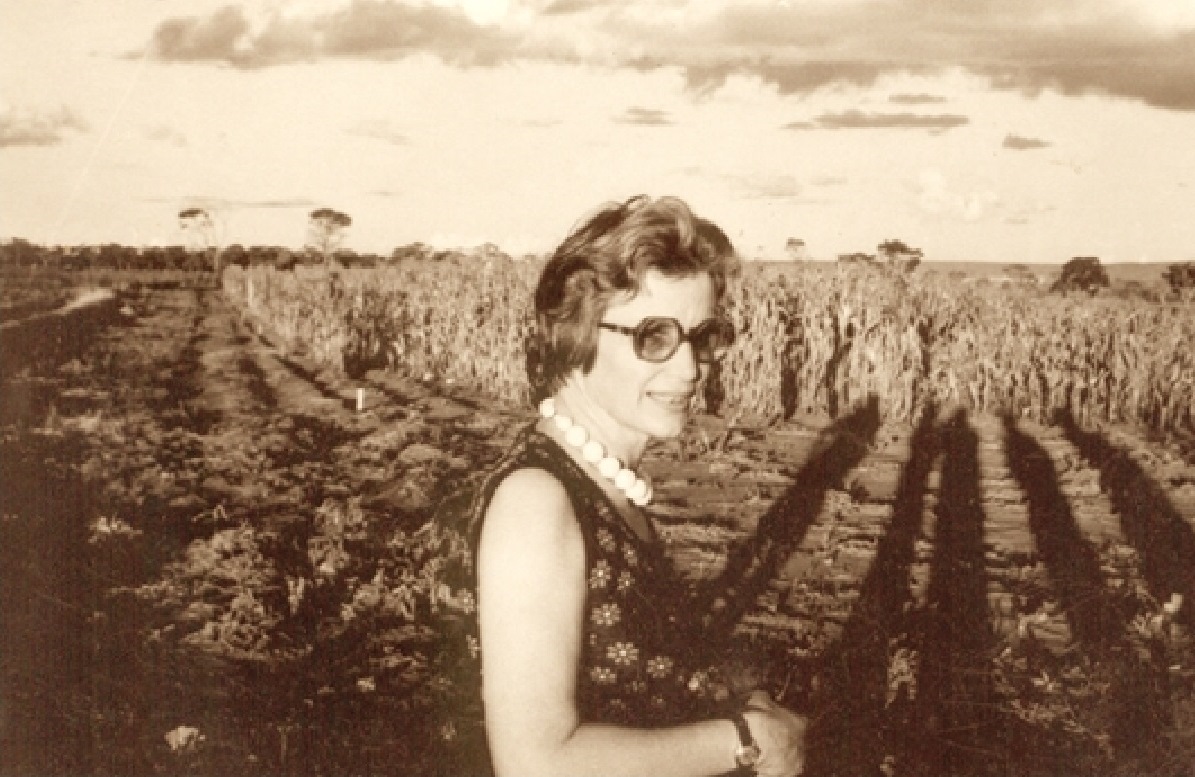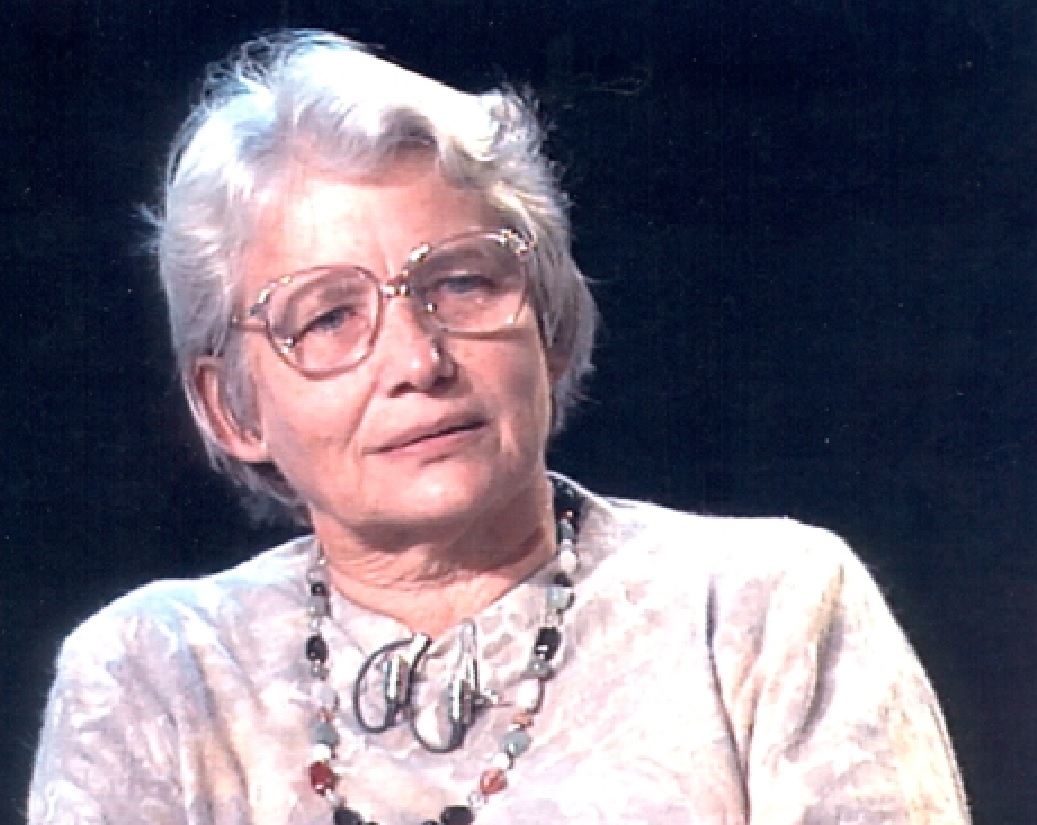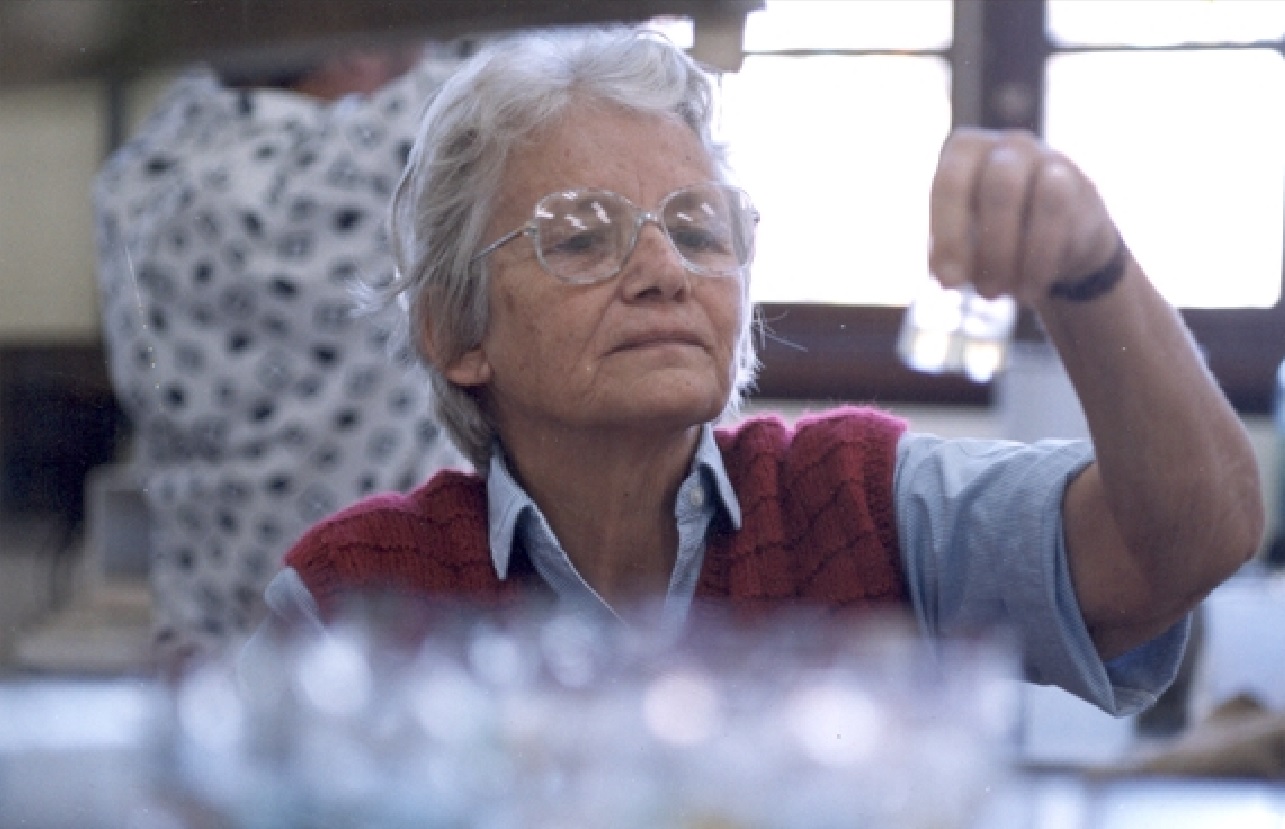Johanna Döbereiner: the scientist who changed agriculture
 Johanna Döbereiner has inspired hundreds of texts about herself. She was the subject of news in some of the main Brazilian magazines and is still remembered today when it comes to science. She was, as many of her friends and co-workers say, a woman ahead of her time. Clichés aside, Johanna's life was indeed a remarkable achievement. She needed to impose herself to be recognized; she had to defend her ideals in a generally hostile environment to her gender; she had to show that she was competent, effective and efficient to take on multiple roles. Her journey begins well before the figure of the white-haired lady holding and analyzing plates in the laboratory. The image of a young and persistent Johanna is as real as that of the lady nominated for the Nobel Prize in Chemistry at 72 years old.
Johanna Döbereiner has inspired hundreds of texts about herself. She was the subject of news in some of the main Brazilian magazines and is still remembered today when it comes to science. She was, as many of her friends and co-workers say, a woman ahead of her time. Clichés aside, Johanna's life was indeed a remarkable achievement. She needed to impose herself to be recognized; she had to defend her ideals in a generally hostile environment to her gender; she had to show that she was competent, effective and efficient to take on multiple roles. Her journey begins well before the figure of the white-haired lady holding and analyzing plates in the laboratory. The image of a young and persistent Johanna is as real as that of the lady nominated for the Nobel Prize in Chemistry at 72 years old.
Johanna was a scientist, a woman and a mother. She has received numerous awards and honors. She led the research at the then National Agronomic Research Service's Institute of Ecology and Agricultural Experimentation – Embrapa Agrobiology's predecessor – and mentored scholarship holders who are now spread throughout Brazil, perhaps even throughout the world. She was head of the Unit, but she never left the research activities aside in order to focus only on the administrative and bureaucratic procedures of a government institution. She collected functions with mastery, as if she were conducting an orchestra.

Fully based on the BNF process, the Brazilian soybean breeding program, initiated in 1964, developed in the opposite direction to that of the US, which was based mainly on the intensive use of nitrogen fertilizers. Johanna studied the use of bacteria to boost nitrogen fixation in soybeans in depth and the practical application of the technique allowed Brazil to eliminate the use of these chemical fertilizers, which represented annual savings of more than 2 billion dollars – not to mention sustainability, as the technology does not generate environmental liabilities. "In the 1960s, going against chemical fertilization was nearly blasphemous. The fertilizers were changing agriculture. Only a long time later did I see that our research allowed the production to be not only cheaper but also more ecological, because it did not pollute the rivers or the soil", she said in an interview with Veja magazine in August 1996.
Johanna's contribution to science and agriculture is evident – and all it takes is a flip through that time's news articles to remember her journey. She and her colleagues described more than nine new species of diazotrophic bacteria, an unprecedent fact for Brazil in the agricultural area. Johanna changed the way agriculture works, proving that it is possible to have a sustainable production without wearing out natural resources, while also maximizing productivity. But did the "lady of the miraculous creatures", as Veja magazine called her, know that she would make such advance in scientific knowledge when she first had contact with the land?
Although there is no answer to this question, one thing is certain: Johanna's greatest satisfaction was to see her contribution, through her research, to the adoption of sustainable practices in agriculture – and not only the awards and honors that crowded the walls and furniture of her living room. She always shared the recognition with her coworkers. "I don't do anything alone. Everything is the result of a lot of exchange among our team", she said.
From Prague to Rio de Janeiro: the trajectory of a peasant in the laboratory

Johanna was born in Aussig, in the former Czechoslovakia, but it was in Brazil that she put down her roots. In the city of Seropédica, in the Rio de Janeiro countryside, she settled and raised three children – Maria Luísa (Marlis), Christian Erhard and Lorenz. She lived 48 years in the same house, on Colina Street, with her husband, the veterinarian Jürgen Döbereiner (pictured together in 1999). Naturalized Brazilian in 1956, she arrived in Rio de Janeiro in 1950, after the turbulent years that followed World War II.
Her mother, Margarethe Kubelka, had died in a Czech concentration camp – one of the many that were formed in the then Czechoslovakia after the conflict, in persecution of Germans and the part of the country's population that had received German nationality at the beginning of the war. But her strength had already been passed on to Johanna. "We should not tell our daughter that her destiny will be fulfilled when she finds a husband. We should tell our daughter that her victory will have been achieved when she is proud of what she has accomplished", Margarethe wrote in her diary.
Shortly after Margarethe's death, the family continued to be persecuted by the Czechs, and was expelled from the country in 1945. Her father, Paul Kubelka, left Prague with Johanna's brother, Werner. She went to Germany with her grandparents, leaving behind the city in which she had lived since she was a child and where she had sometimes followed her father to chemistry classes that he taught at the University of Prague.
 She came into contact with agriculture in the mid-1940s, when she got a job as a farm worker in Sadisdorf, in the German region of Dresden (photo on the right). It was by planting potatoes and milking cows that she guaranteed the money to support herself and her grandparents, who died in 1945. Perhaps inspired by the strength and education her mother had given her, she decided to go against gender conventions and enrolled in the agronomy course at the University of Munich – an area that was hardly open to women. She paid for her education by working in the field, in a farm where improved wheat varieties were produced, where she also trained for the practical exams required for admission to the course.
She came into contact with agriculture in the mid-1940s, when she got a job as a farm worker in Sadisdorf, in the German region of Dresden (photo on the right). It was by planting potatoes and milking cows that she guaranteed the money to support herself and her grandparents, who died in 1945. Perhaps inspired by the strength and education her mother had given her, she decided to go against gender conventions and enrolled in the agronomy course at the University of Munich – an area that was hardly open to women. She paid for her education by working in the field, in a farm where improved wheat varieties were produced, where she also trained for the practical exams required for admission to the course.College made Johanna sure of the path she was going to take. There she met Jürgen, her long-time companion, and when she landed in Brazil in 1950, following in her father's footsteps, she arrived at the National Agronomic Research Service's Institute of Ecology and Agricultural Experimentation with the agronomist diploma in hands. She confessed that she had not learned anything practical at university, due to post-war limitations, but that she was very willing to learn whatever it took. She was hired on the spot.
She stood out, earned the respect of her peers and, little by little gained worldwide recognition for her work. But she was modest. When someone asked her what her life as a researcher was like, she did not hesitate to answer: "There is nothing special about a scientist's life. It is a routine like any other. But my office is a laboratory. I'm a peasant in the laboratory."
Such dynamism was not overshadowed by the years. Whether in her 30s or 70s, Johanna kept her eyes bright, her data examination sharp, and her conviction that only science and the search for knowledge could contribute to a more sustainable agriculture. "I have ideas for another 50 or 60 years. I won't live this long. We have to exchange information and knowledge. Science needs this", she said at the height of her career.
Nominated for a Nobel Prize, but anonymous for general audiences
 A scientist recognized by the International Academy, she was divided between recognition in academia and anonymity for the general public. Not much of the Brazilian population had heard her name when she died in October 2000 at the age of 75. Even today not many people have. She was modest and kept simplicity in everything: in her clothes, in her house, in her everyday life. She did not squander luxury or lead a life of excess. She did not get rich or famous. "I could choose anywhere in the world to live today. It would be easy for me to get find equivalent or better jobs in the US, in Australia, in Europe. I have received invitations to work in other countries, but I will not exchange Brazil for any other. It is the country I chose, I am very well here and I would not leave it even to have advantages in other places", she told O Globo in 1979.
A scientist recognized by the International Academy, she was divided between recognition in academia and anonymity for the general public. Not much of the Brazilian population had heard her name when she died in October 2000 at the age of 75. Even today not many people have. She was modest and kept simplicity in everything: in her clothes, in her house, in her everyday life. She did not squander luxury or lead a life of excess. She did not get rich or famous. "I could choose anywhere in the world to live today. It would be easy for me to get find equivalent or better jobs in the US, in Australia, in Europe. I have received invitations to work in other countries, but I will not exchange Brazil for any other. It is the country I chose, I am very well here and I would not leave it even to have advantages in other places", she told O Globo in 1979.See here researcher Johanna Döbereiner's full timeline
Read here a tribute paid to the scientist on Embrapa's 40th anniversary
